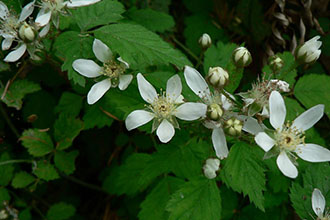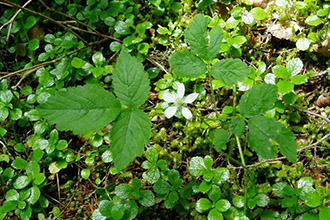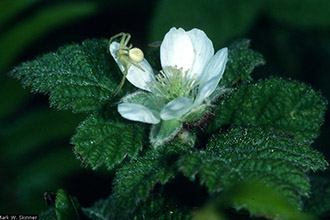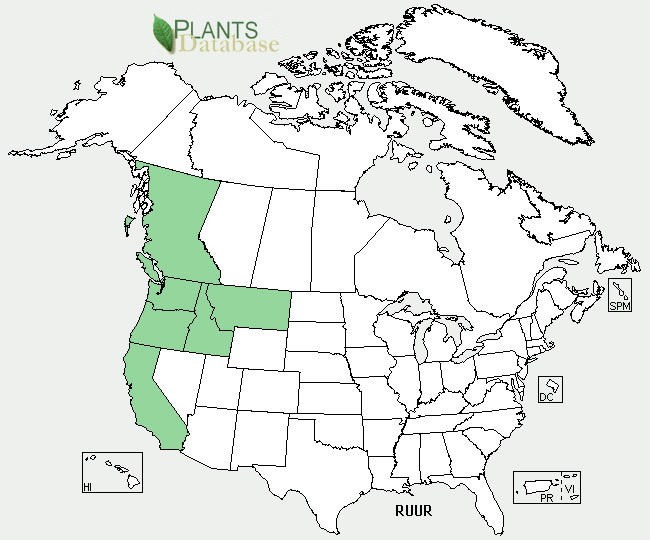Kingdom - Plantae (plants). Subkingdom - Tracheobionta (vascular plants). Superdivision - Spermatophyta (seed plants). Division - Magnoliophyta (flowering plants). Class - Magnoliopsida (dicotyledons). Subclass - Rosidae. Order - Rosales. Family - Rosaceae (rose family). Genus - Rubus L. (blackberry). Species - Rubus ursinus Cham. & Schltdl. (california blackberry).
Ecology: California blackberry is a low-growing, California or climbing, native evergreen shrub. This mound-building shrub can grow to 5-6 m in length. The densely prickled stems are greenish when young but turn brown at maturity. The somewhat prickly, deeply-lobed, alternate leaves are palmate and a lighter green color beneath.
The stems of most blackberries are biennial. Sterile first-year stems, known as primocanes, develop from buds at or below the ground surface and produce only leaves. Lateral branches, or floricanes, develop in the axils of the primocanes during the second year and bear both leaves and flowers. Perfect flowers of California blackberry develop in clusters of 2 to 15 near the ends of leafy branches. Fruit is red and hard when immature but shiny black when ripe. Fruit is oblong or conical, somewhat bristly, and up to 2 cm in length. Aggregates of druplets, commonly referred to as "berries," are sweet and flavorful at maturity.



